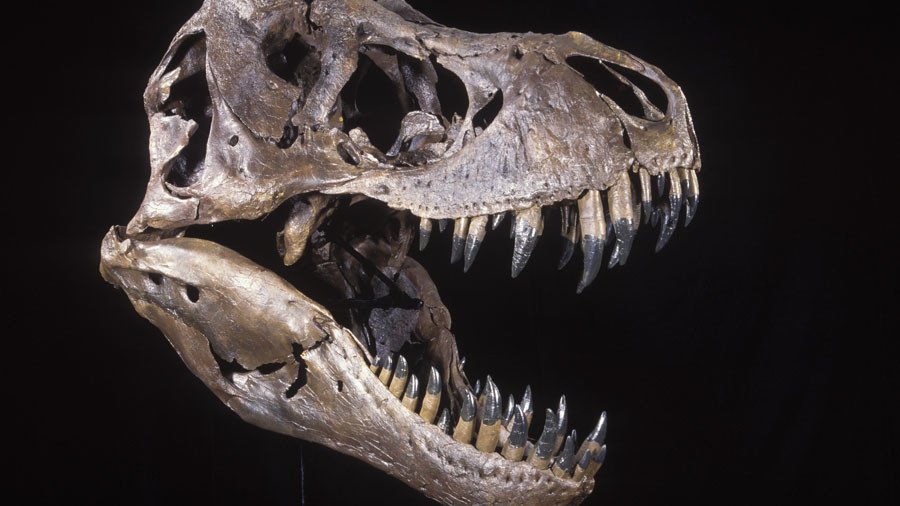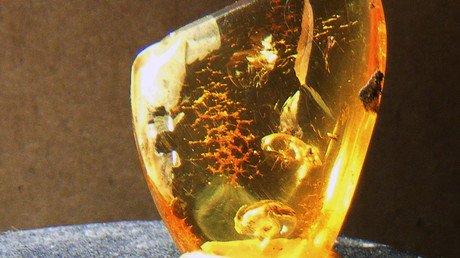‘Bound by blood’: ‘Dracula’ tick gorged on 99mn yo dinosaurs

Ticks, long the scourge of your favorite pooch, have been terrorizing animals for eons. Scientists have discovered a previously-unknown type of the irritable arachnid – which sucked on the blood of dinosaurs – entombed in near-100-million-year-old amber.
If this all sounds a little familiar, that’s because it is. Think Michael Crichton’s classic ’90s bestseller ‘Jurassic Park’ and its sequels, which spawned a series of blockbusters by Steven Spielberg.
In the books and films, eccentric theme park owner and dinosaur buff John Hammond, played by Richard Attenborough, clones a number of dinosaurs by extracting their DNA from a mosquito encased in ancient amber, predictably disaster ensues.
Not that these actual scientists have any illusions of that particular outcome materialising. “It seems that modern techniques are unable to extract DNA, or at least sufficiently well-preserved DNA, from amber inclusions (organisms trapped in amber),” study author Ricardo Pérez-de la Fuente said, according to Reuters. “DNA does not stand the passing of time, of millions of years, when entombed in amber.”
Jurassic Park is not the only literary reference associated with these newly-discovered Myanmar ticks. Researchers have even named one of them after the world’s most famous bloodsucking creature – Bram Stoker’s ‘Dracula’.
READ MORE: Ancient ‘hell ant’ with metal horns & trap jaw found inside amber (PHOTOS)
Deinocroton draculi, or ‘Dracula’s terrible tick,' has truly earned its name. Scientists discovered that the vampiric tick was so engorged with blood that its body had swollen to eight times its normal size.
Despite this, however, it has not been possible to determine what dinosaur the tick was feasting upon. Scientists can only speculate that, due to the fact that it was still gripping a feather after all of these years, it was a species of dinosaur, from which modern birds evolved.
"Dracula ticks in amber tell ancient blood-sucking tale" - Amazing new paper from our research fellow Ricardo Pérez-de la Fuente and colleagues shows first direct evidence of ticks parasitising feathered dinosaurs 100 million years ago.https://t.co/ntLy5ewPRmpic.twitter.com/YyDawVbMMb
— MuseumNaturalHistory (@morethanadodo) December 12, 2017
“Together, these findings tell us a fascinating story about ancient tick behavior. They reveal some of the ecological interactions taking place among early ticks and birds, showing that their parasite-host relationship has lasted for at least 99 million years: an enduring connection, bound by blood,” Pérez-de la Fuente wrote.
Parasitic tick trapped in amber sucked the blood of feathered dinosaurs 99 million years ago. Our research fellow and co-author Ricardo gives you the lowdown on the blog: https://t.co/14qtoqRhog@UniofOxfordpic.twitter.com/v0YbBh1Ysb
— MuseumNaturalHistory (@morethanadodo) December 13, 2017
The research was published Tuesday in the journal Nature Communications.














